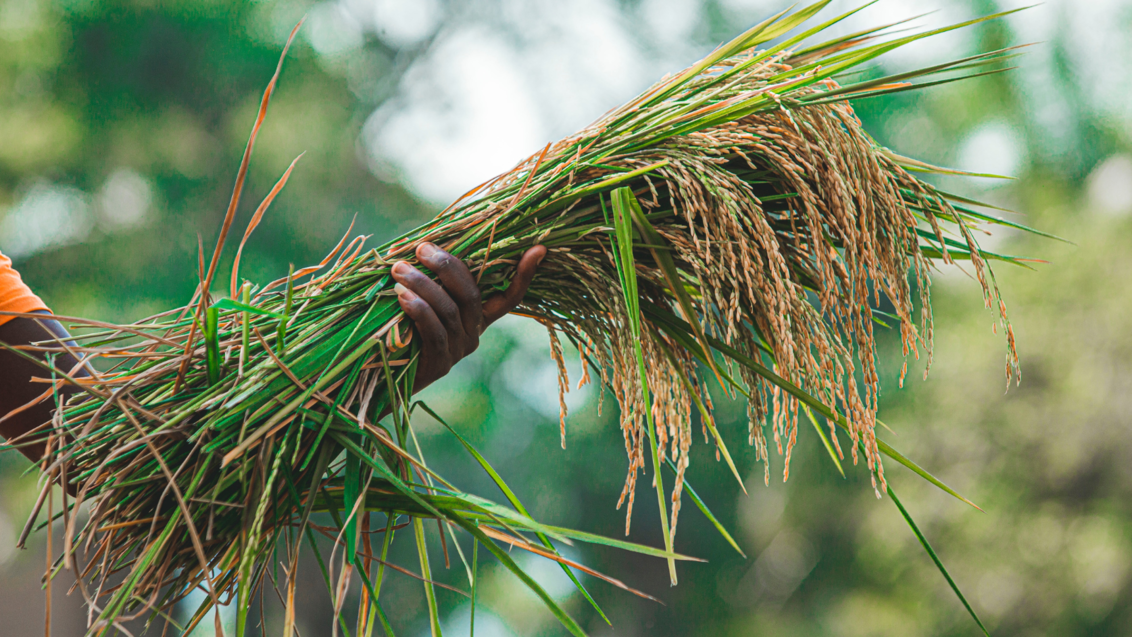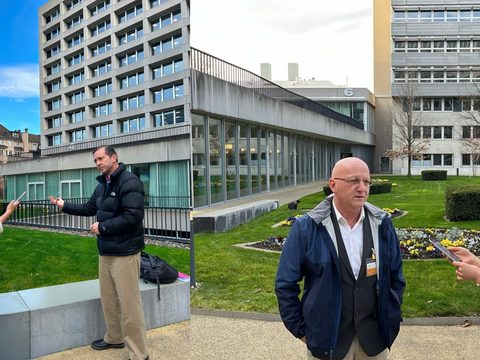Two foundations tackle multiple challenges in a crucial crop

By Salif Kanté, Isaiah Gabriel & Alva Kretschmer
Oryza sativa, popularly known as rice, is a key staple in West Africa. It plays a crucial role in regional food security, both for rural and urban populations. In recent years, demand has outpaced production. This is due to rapid population growth and increases in per capita consumption. The region has responded by importing more rice from Asia.
Despite some impressive production gains in most West African countries in the past few decades, rice yields are still much below their potential. Although farmers in areas with total water control can achieve about 6 t/ha, average national yields range between 2 and 3.5 t/ha. That is about half of the average in Asia.
There are numerous reasons for the low yields. They include a lack of technical know-how, poor-quality seed, lack of crop insurance, and inadequate input use and farming practices. West Africa also suffers from poor infrastructure, such as limited irrigation facilities and road networks, as well as low levels of mechanization. There is also a lack of coordination and finance along the value chain. Governments with good policies do not always implement these well. The overall results are low rice productivity and quality, as well as poverty for many smallholders.
In collaboration with the Bill & Melinda Gates Foundation (BMGF) China Office, we are working to improve this situation in Mali and Nigeria. Together with local research organizations and rural development structures, we have been enhancing our understanding of the gaps, challenges, needs, and opportunities along the rice value chains. Studies are supported by extensive data collection in the field. In Nigeria, for example, we conducted more than 2200 interviews with producers, as well as public and private organizations, across eight major rice-growing states.
Our fieldwork indicates that challenges persist across the entire chain, but that the two countries have specific major gaps. Nigeria faces challenges with seed supply and demand, as well as with rice processing and poor implementation of government policy. Mali has several production challenges. These include inadequate input supply and ineffective commercialization. However, producers in the four regions in which we conducted interviews pointed above all to a lack of mechanization. About half of the farms essentially rely on manual tooling, and almost all use dabas, hoes, and picks. Our interviewees also remarked on the inadequate quality of processing equipment.
These findings are in stark contrast to Asia. China is the world’s largest producer and consumer of rice. Its success has many lessons to offer. China’s rice sector has greatly benefited from technological advances, policy support, mechanization, and the organization of farmers and supply chain actors. Nigeria and Mali can most importantly learn from China about increasing the availability of improved seed, streamlining standards and processes, subsidizing mechanization, and providing numerous opportunities for investment across the rice value chain. All these measures boost both production and quality.
BMGF and we are now exploring opportunities for adapting China’s rice value chain technologies and practices to improve the situation in Mali and Nigeria. We recently held workshops in Bamako and Abuja with high-level stakeholders from the public and private sectors as well as donors. The workshops aimed to discuss our study findings and recommendations, and to secure stakeholder commitments to implement the proposed improvements. Participants agreed that well-known problems in the rice value chain persist. There is an urgent need for innovative technologies to enhance productivity, take China as a leading example, and strengthen private-public dialogue in the sector.
As a next step, we are mapping out funding gaps and timelines for mobilizing resources from domestic and international investors and donors. We hope that this initiative will generate new investments and public-private partnerships for stronger, inclusive, and more productive rice value chains that benefit smallholder farmers in Nigeria and Mali.

